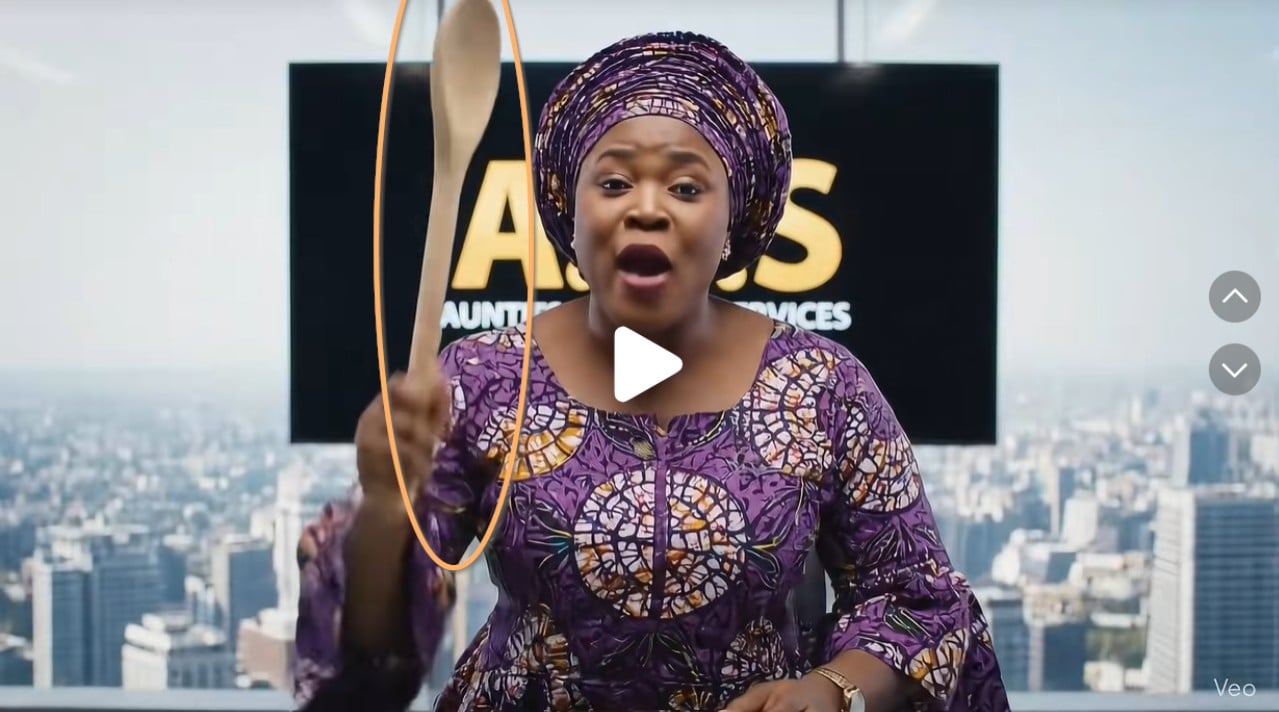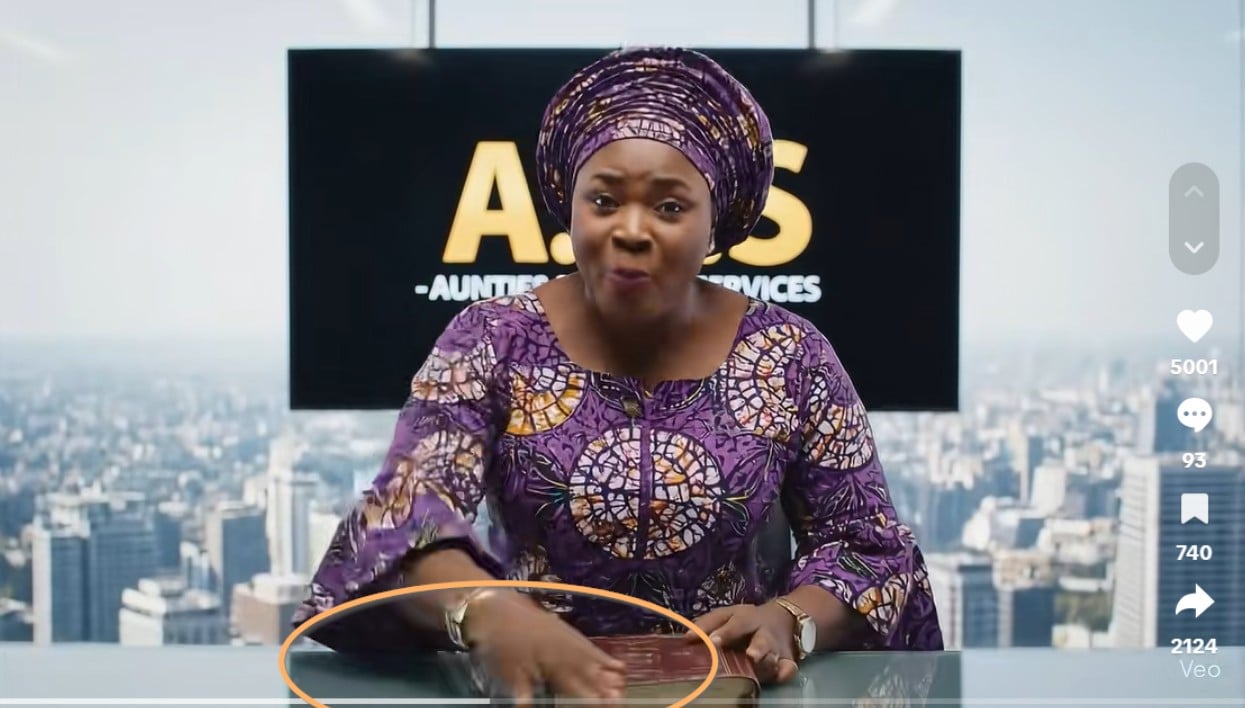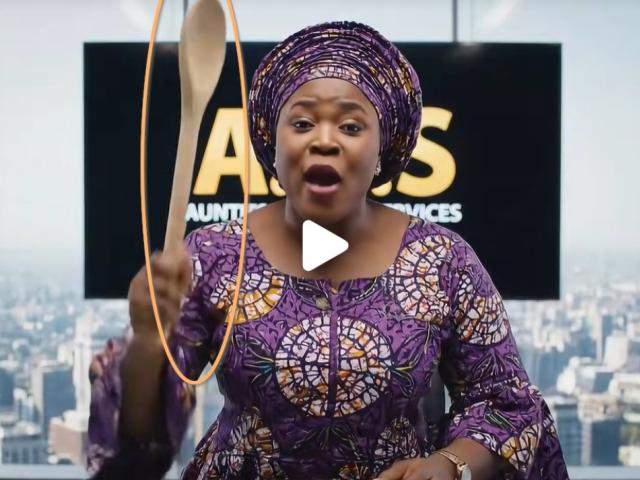Identifying videos generated by Veo
While it’s becoming increasingly difficult to catch AI-generated videos, there are methods to identify those produced by Veo.
1. Look for the Veo tag
Since May 2025, Google has added a subtle watermark to videos generated with Veo. It appears in the bottom right corner, but it’s small, easy to miss and can be cropped before a video is shared.
Videos made by AI Ultra subscribers in Flow, Google’s premium AI filmmaking tool, won’t display the watermark. Google’s solution to this is an invisible watermarking system called SynthID.
2. Use SynthID
Google created SynthID to help spot Google’s AI-generated content and promote transparency and trust in generative AI. SynthID embeds digital watermarks inside AI-generated images, videos and texts. But they are only detectable by SynthID’s technology, not visible to the naked eye.
For now SynthID is limited to early testers and hasn’t been rolled out to the public.
Silas Jonathan, who heads the Digital Technology, Artificial Intelligence, and Information Disorder Analysis Centre at the Centre for Journalism Innovation and Development in Abuja, Nigeria, told Africa Check that the lack of access to such advanced detection tools puts fact-checkers and journalists at a disadvantage.
Without tools like SynthID, he said, most fact-checkers on the continent had to rely on open-source techniques, mobile devices and often unstable internet connections to investigate misleading content.
“Tech companies like Google should prioritise local integration,” Jonathan said, calling for training partnerships and stronger support for fact-checking networks in the Global South.
He also said that companies releasing lightweight application programming interfaces (APIs) would make a difference. An API is a set of rules that lets different software or apps communicate and exchange data. Lightweight APIs are designed to be efficient and easy to use in low-resource environments.
For Google, lightweight APIs would encourage the global usage of SynthID in various systems– potentially making spotting AI contents accessible at the fingertips of journalists, media researchers, or even social media users.
“If they’re serious about fighting information disorder, then equity in access has to be part of the plan,” said Jonathan.
3. Check for errors in the text
Even with major improvements, Veo – like most AI video generators – still struggles with adding text to videos, especially in African contexts. In one video featuring an AI news presenter, the text on the background screen, meant to show a breaking news headline, was illegible. Later in the same clip, a podium sign reads “Minister of Inforimation”.
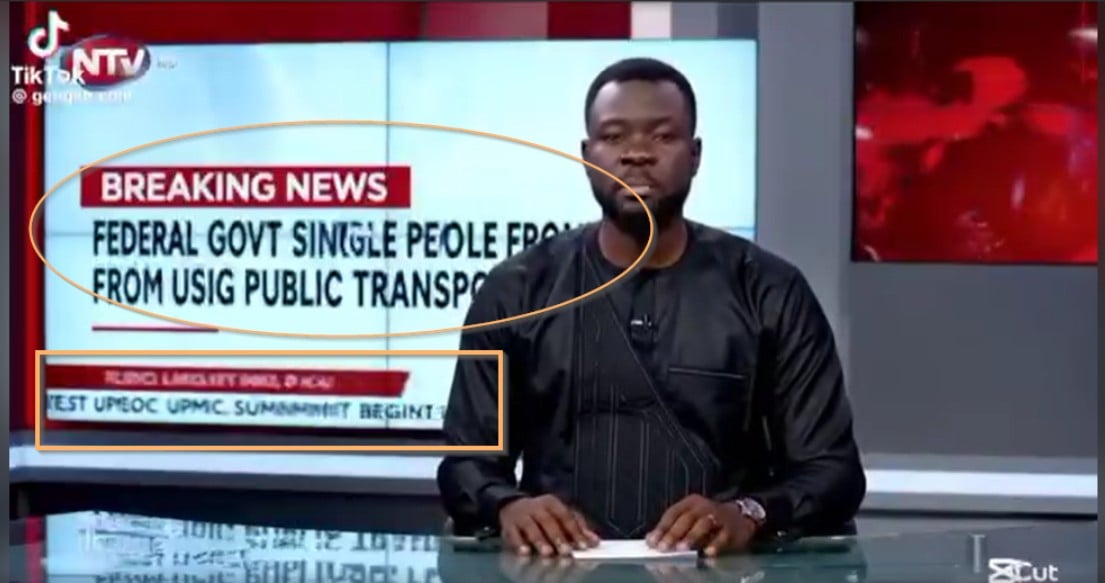
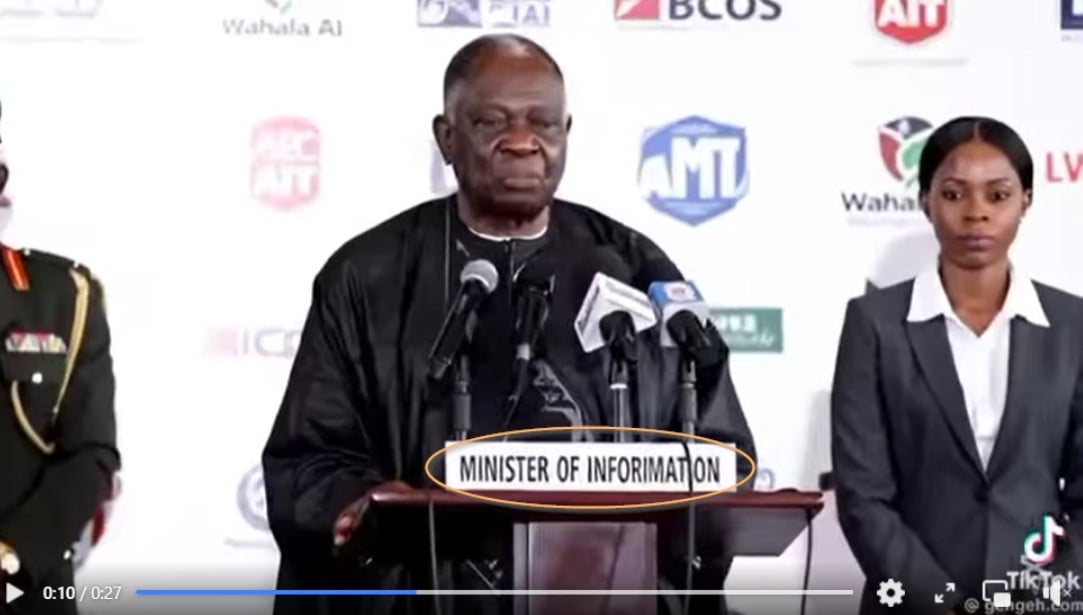
4. Listen out for native tongue disparities
Africa’s linguistic diversity still poses difficulties for AI. Veo often makes mistakes with local languages, as seen in some videos. One shows a model wrongly pronouncing the name of a local Yoruba food, “amala” and another, where the Yoruba word “babalawo”, meaning “high priest” was mispronounced. The models couldn’t deal with the highly tonal language.
5. Short videos could be a red flag
Most Veo clips run for only about eight seconds. Users can add more prompts to build a storyline and make longer videos, but each scene remains brief, a telltale giveaway that it was made with Veo.
6. Technical glitches
Keep an eye out for technical glitches, particularly objects suddenly appearing and disappearing. For example, in this video, an umbrella suddenly appears in a reporter’s hands. In another, the wooden spoon a woman was using to gesture suddenly disappears.
